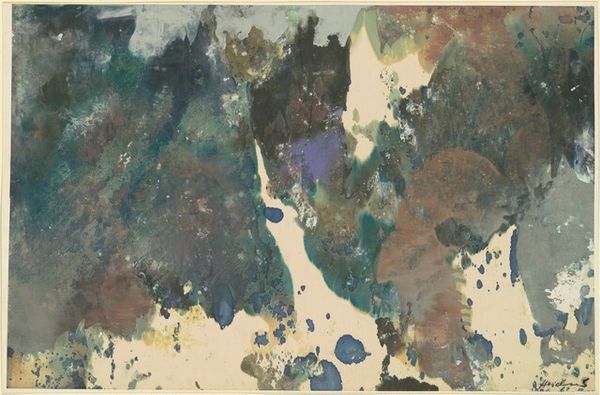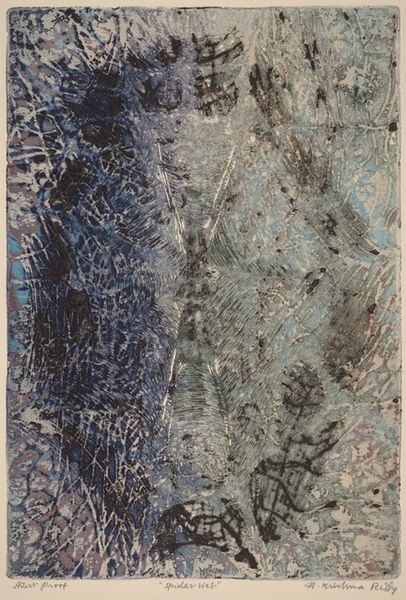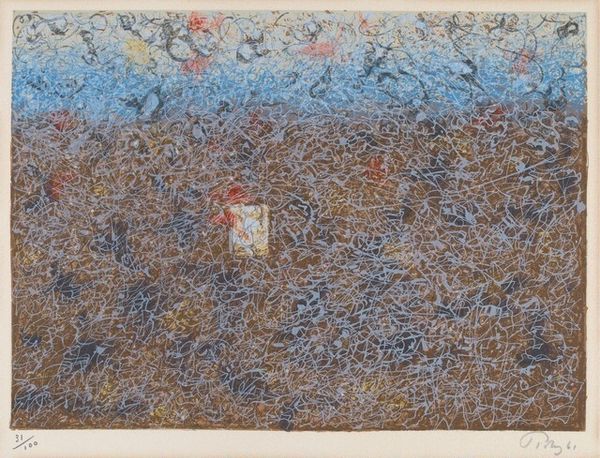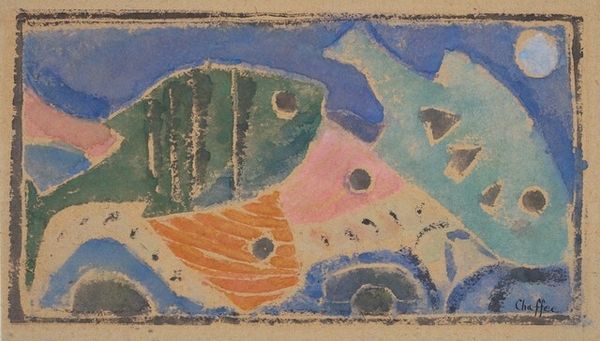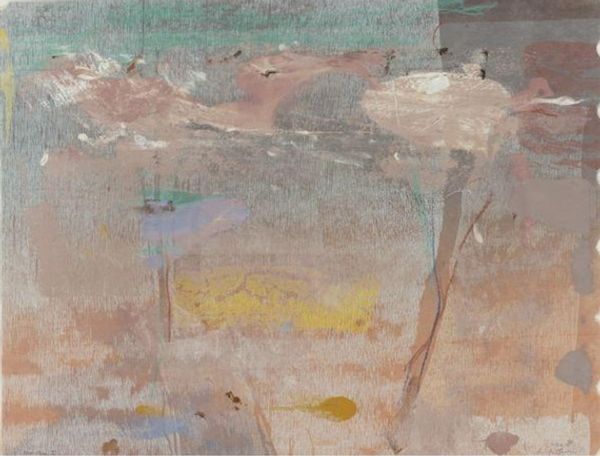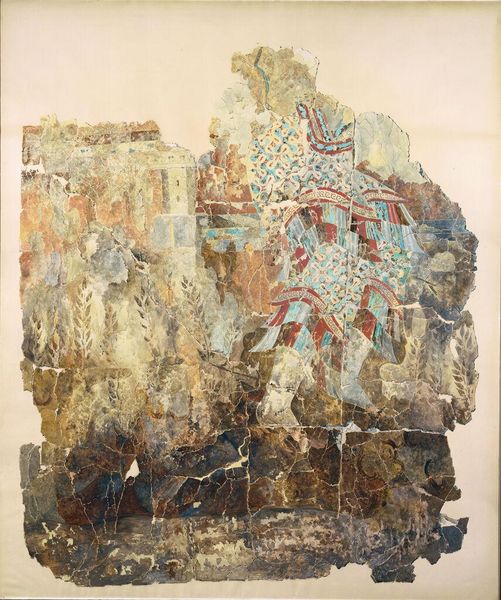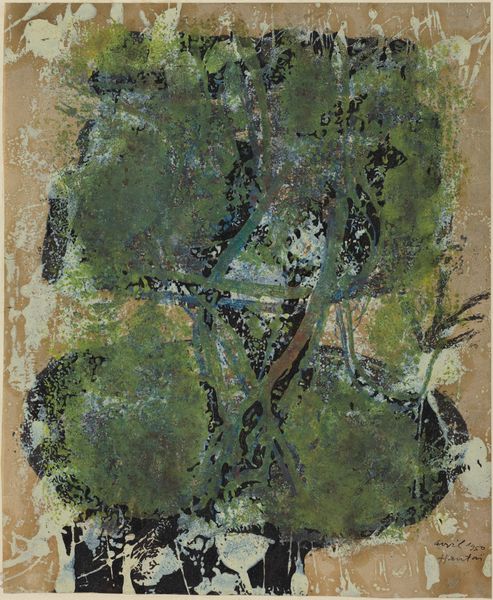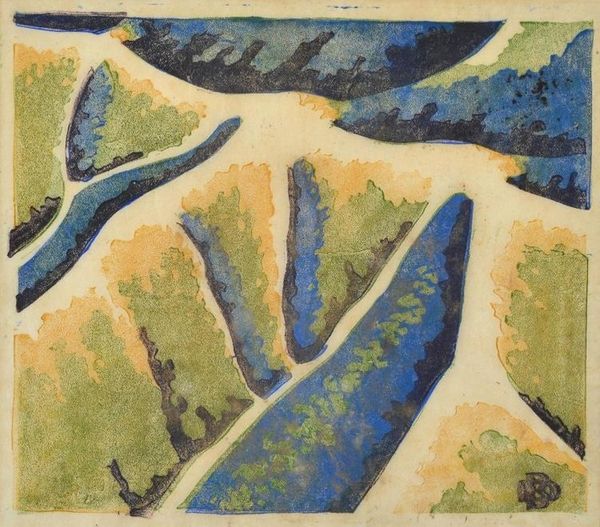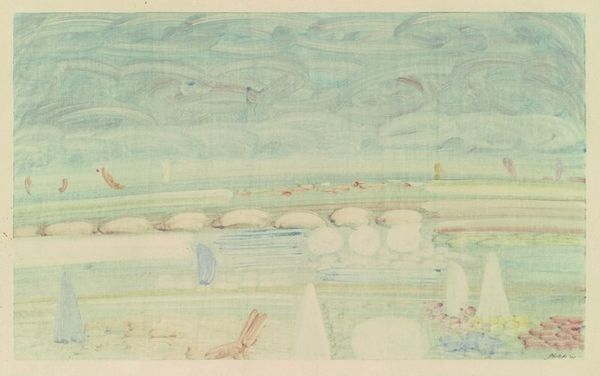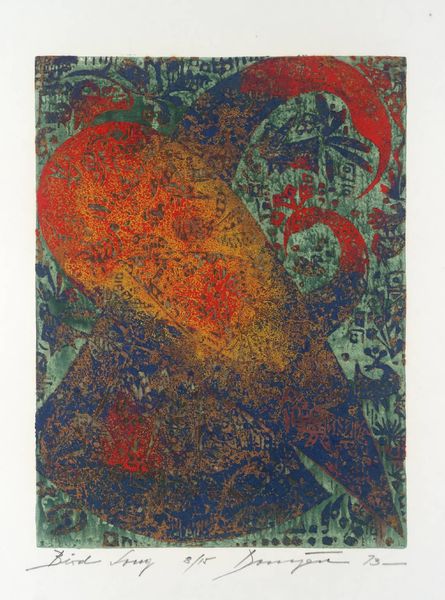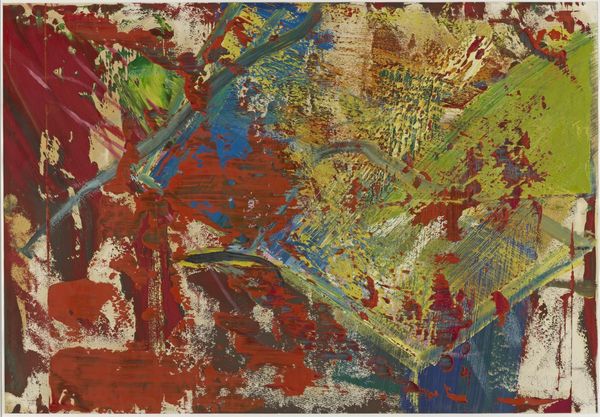
mixed-media, matter-painting, print, acrylic-paint, watercolor
#
abstract-expressionism
#
mixed-media
#
matter-painting
#
water colours
#
non-objective-art
# print
#
acrylic-paint
#
oil painting
#
watercolor
#
abstraction
#
mixed media
Dimensions: image: 58.5 x 80 cm (23 1/16 x 31 1/2 in.) sheet: 63.3 x 88.4 cm (24 15/16 x 34 13/16 in.)
Copyright: National Gallery of Art: CC0 1.0
Curator: This is Worden Day's "Prismatic Presences," created in 1957 using mixed media. Editor: Immediately, the texture grabs me. It’s almost geological—like looking at cracked earth or the face of a glacier, punctuated by these sudden, bright colors. There's a sense of both fragility and immense age. Curator: Day's work, though often categorized as abstract expressionism, moved beyond pure gestural abstraction. We see here the artist engaging with what's termed "matter painting" – that physicality you're noticing. Day experimented with building up surfaces, embedding various materials to create pronounced textures. It was an exciting development in art’s evolution beyond easel painting. Editor: How was the artistic climate impacting these techniques? Curator: Post-war, there was this broader cultural grappling with materiality, I believe. An existential questioning of what constitutes 'reality,' coupled with anxieties over progress. The embrace of unconventional materials – everything from sand to broken glass – and painterly abstraction, could be viewed as a direct reaction against the clean lines of industrial modernity, and also of the preceding movements. A rejection of conventional beauty standards. Editor: And you see that here—almost like the painting is pushing back, creating its own terrain and breaking the rules and disrupting any easy interpretations, refusing the pristine for something fractured. What’s fascinating is this tension—the cool blues and grays, that rugged texture, but then, bam, pops of red and orange that feel almost defiant. Curator: I'm drawn to consider how Day navigated the male-dominated world of abstract expressionism. While the movement outwardly professed freedom, internal dynamics often replicated societal biases, downplaying the achievements of women and other marginalized voices. So the presence of these defiant colours may show Day carving out space for a singular voice in a cacophony. Editor: It almost anticipates conversations we are still having around environmental degradation and power structures. The cracking, breaking surfaces—they speak to something profound about vulnerability. It has become more evident in this moment of existential dread. Curator: Thinking about Day and "Prismatic Presences," the artwork prompts a further engagement with how the legacy of abstract expressionism continues to resonate in art history and contemporary dialogue around societal progress. Editor: Absolutely. It challenges us to look deeper than aesthetics, prompting questions about who gets to create, who defines 'beauty,' and what stories get told—or, in this case, embodied—in art.
Comments
No comments
Be the first to comment and join the conversation on the ultimate creative platform.
